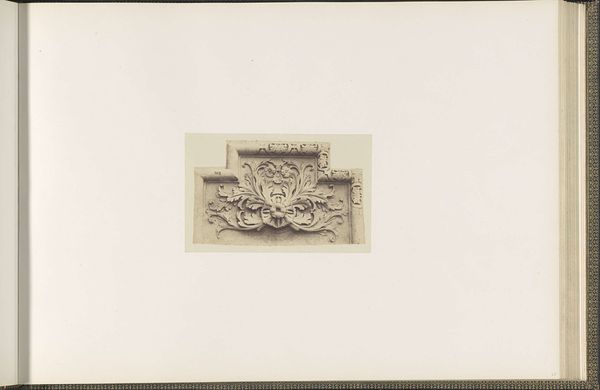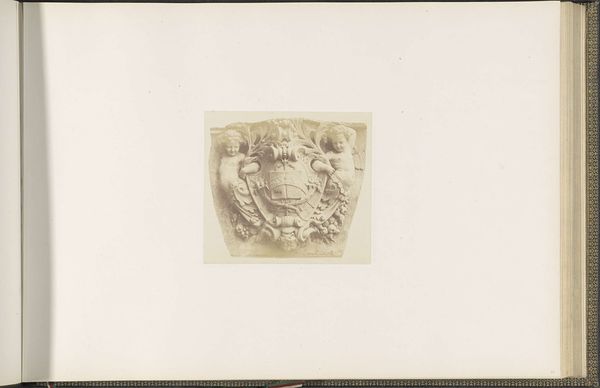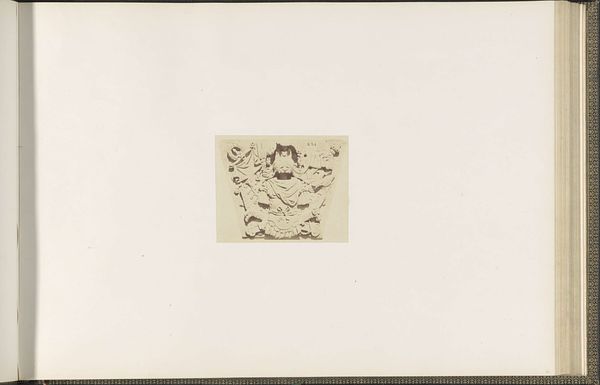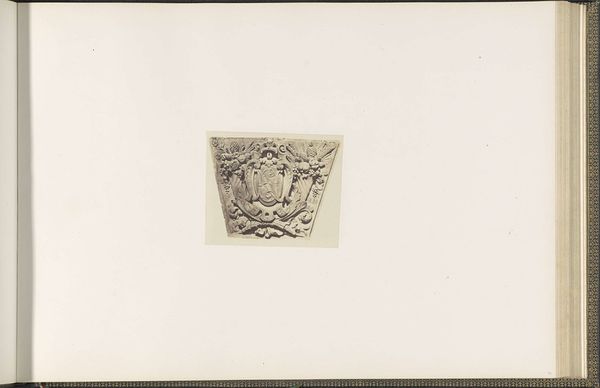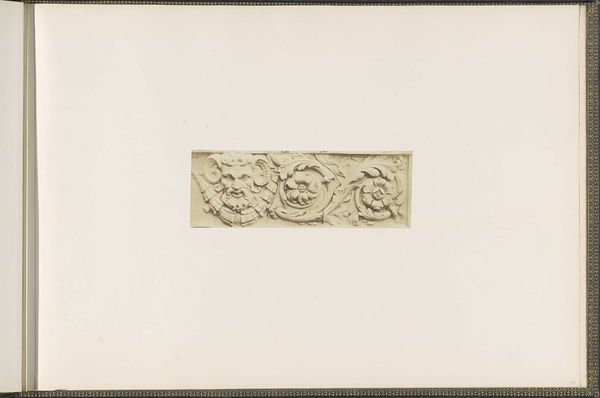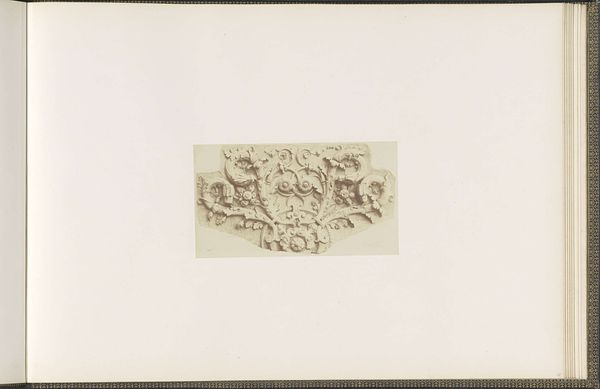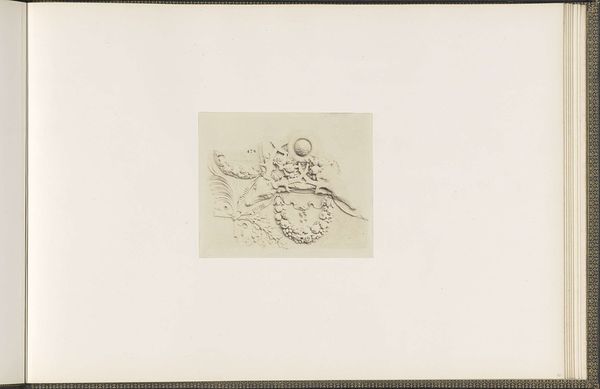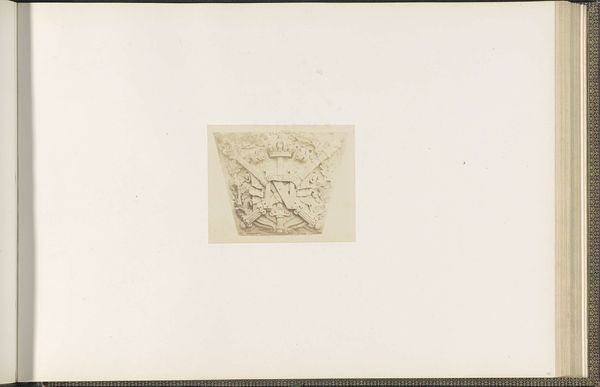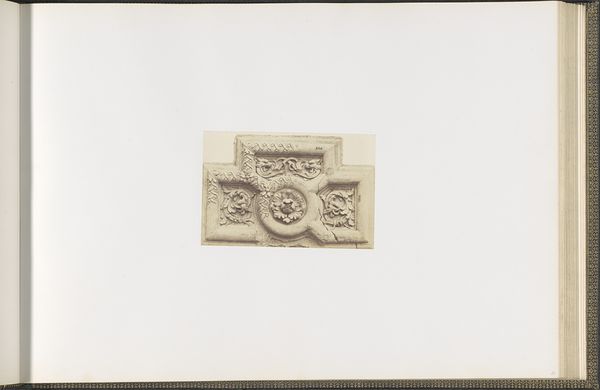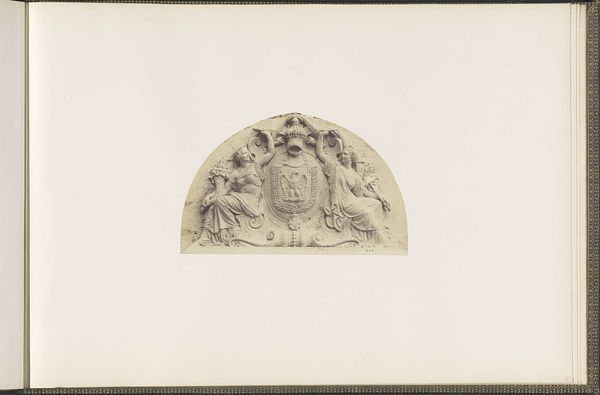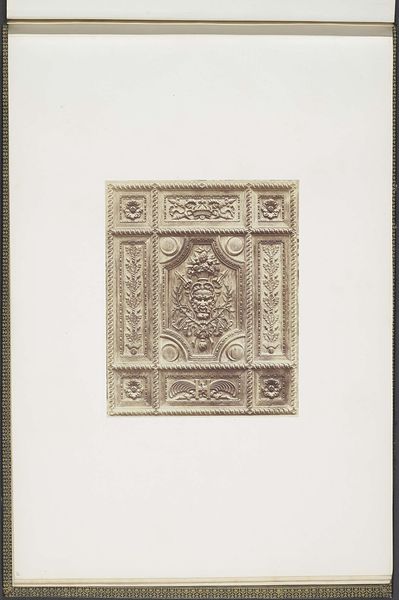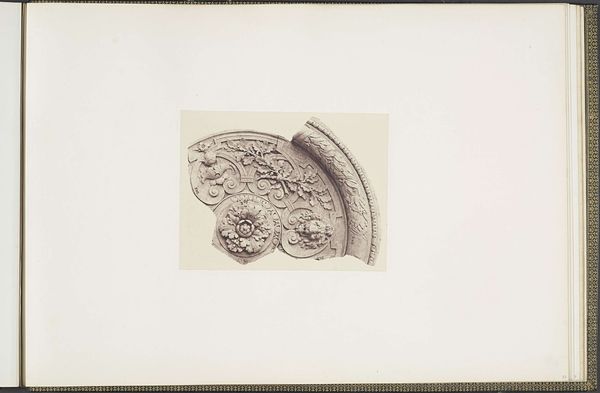
Gipsmodel voor een versiering van het Palais du Louvre door Lebègue et fils c. 1855 - 1857
0:00
0:00
drawing, paper, pencil, architecture
#
drawing
#
neoclacissism
#
pencil sketch
#
paper
#
pencil
#
academic-art
#
decorative-art
#
architecture
Dimensions: height 376 mm, width 523 mm
Copyright: Rijks Museum: Open Domain
Editor: So, this is "Gipsmodel voor een versiering van het Palais du Louvre door Lebègue et fils", or a "Plaster Model for a Decoration of the Palais du Louvre by Lebègue and sons" created around 1855-1857. It is currently located in the Rijksmuseum, and appears to be a pencil drawing on paper. It’s quite detailed, and seems almost like an architect's blueprint. What can you tell me about this piece? Curator: Well, focusing on its materiality, the very fact that it's a drawing, a 'low' medium used to plan a decorative element for the Louvre, is significant. It highlights the labour involved in producing grand, neoclassical designs. Think about the socio-economic context – who were Lebègue et fils, and what kind of workshop did they operate? Editor: So you're less focused on the artistic vision and more on the actual process? Curator: Precisely. We have to consider the entire production chain. The drawing itself represents the initial planning stages, but where did the plaster come from, how was it sourced, who were the laborers who physically crafted the model, and finally installed this decorative piece into the grand Louvre? These ‘minor’ crafts are usually unseen and disregarded. Editor: That makes sense. I hadn't thought about all the work behind the scenes. Curator: Consider also the function of ornamentation at the Louvre. Who was meant to enjoy it, what message did it carry and for whom? And the selection of material… Why use plaster rather than something more “permanent” such as stone? Was that to do with economics and convenience, and if so, what does that tell us about this seemingly everlasting palace of culture? Editor: Right, plaster suggests mass production, not necessarily lasting artistic value. So it shifts our perspective. Instead of just seeing a beautiful decoration, we can view it as a product of specific industrial and economic forces. Curator: Exactly! We move away from a purely aesthetic reading towards an understanding of its material and social life. Editor: That’s really helpful, thanks! Now I understand this artform a lot better.
Comments
No comments
Be the first to comment and join the conversation on the ultimate creative platform.
